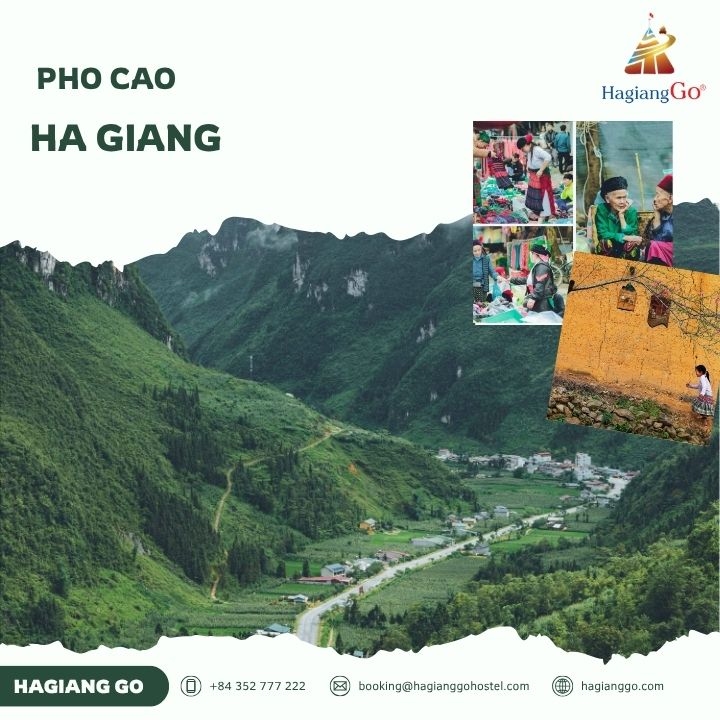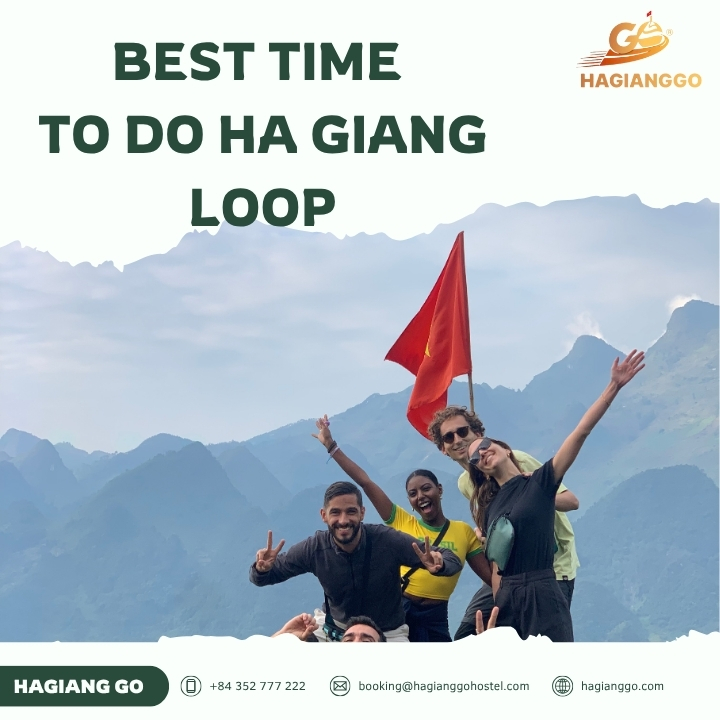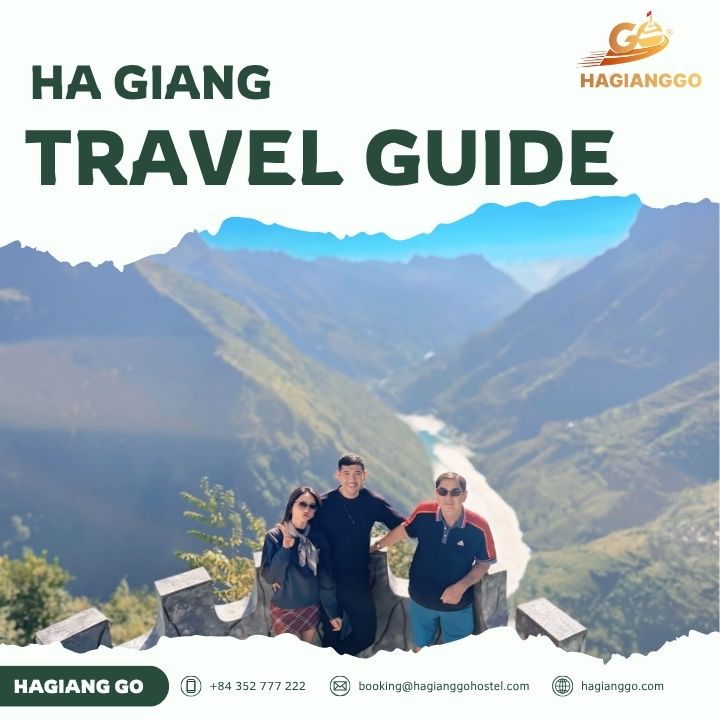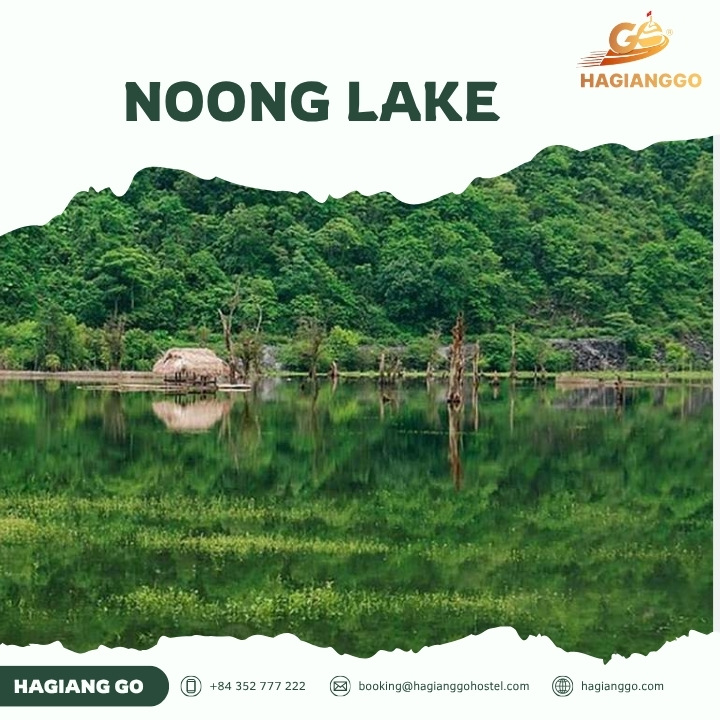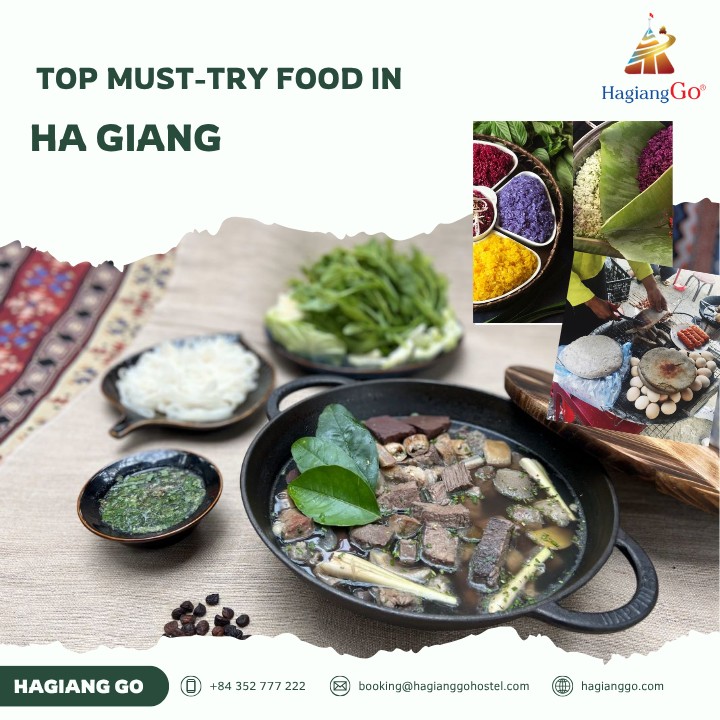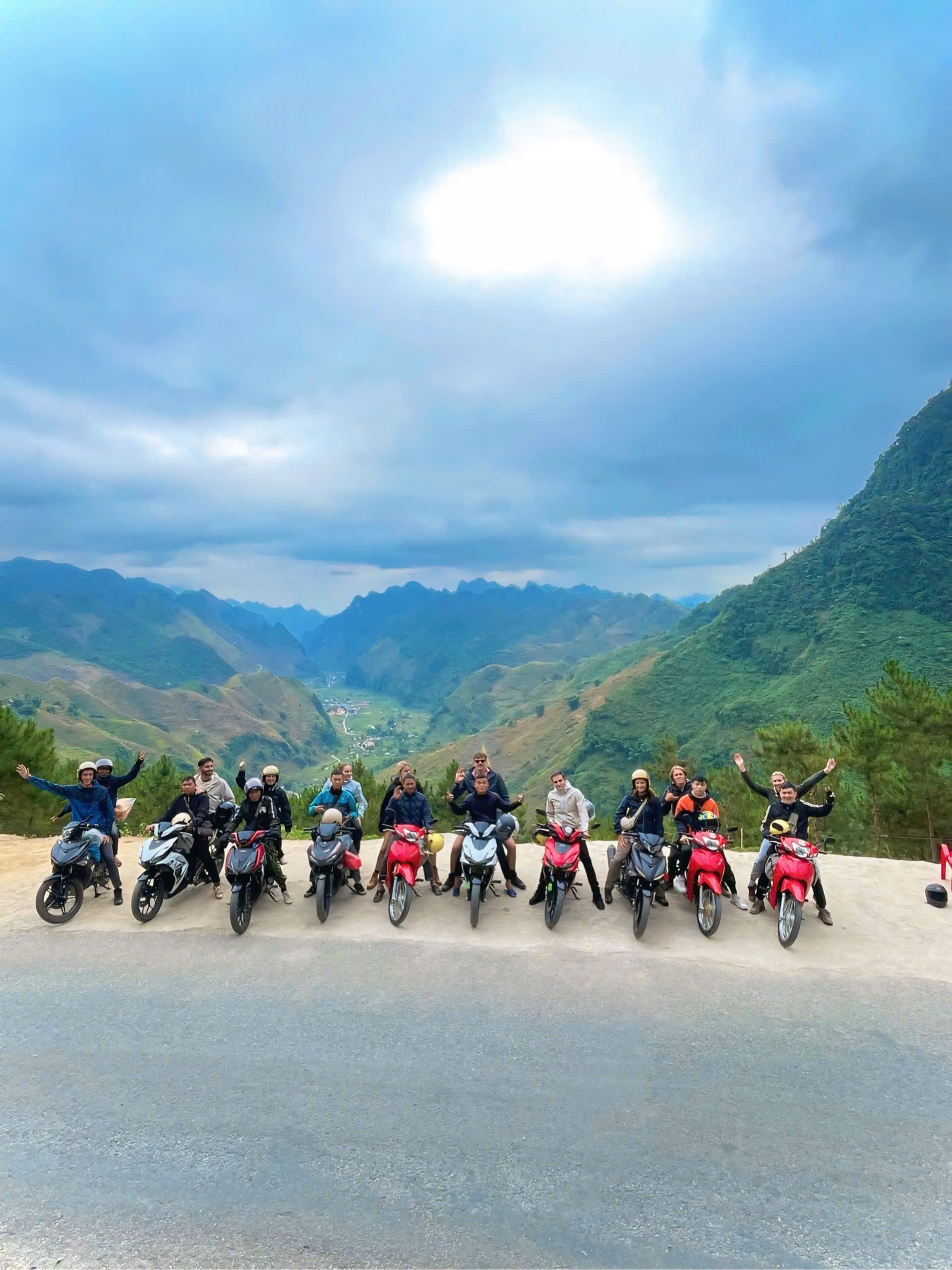1. Where is Pho Cao located?
Pho Cao commune sits gracefully in Dong Van district, Ha Giang province, cradled within a valley that shares its name. This peaceful highland destination represents one of Ha Giang's most serene and pristine locations, offering visitors an authentic glimpse into traditional mountain life.
The village's strategic location is approximately 25 kilometres from Dong Van town centre, making it accessible yet remote enough to maintain its authentic character. From Ha Giang city, the journey covers roughly 150 kilometres of winding mountain roads that reward travellers with spectacular scenery at every turn.
For those planning to explore multiple destinations in the region, Pho Cao serves as an excellent base for discovering other Ha Giang highlights:
- Dong Van old town: 40 kilometres away
- Lo Lo Chai village: 45 kilometres away
- Vuong palace: 20 kilometres away
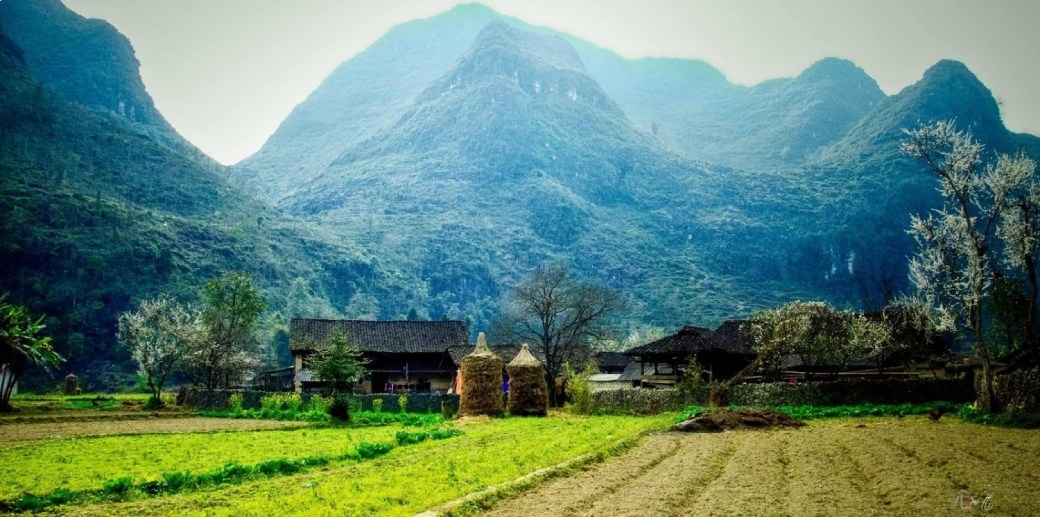
Source: Wetrek
2. How to reach Pho Cao in Ha Giang?
Getting to Pho Cao requires careful planning and preparation, as the journey involves navigating mountainous terrain with winding roads. The most common route begins in Ha Giang city, the provincial capital that serves as the gateway to the region's highland attractions.
From Ha Giang city, travellers typically head north toward Quan Ba, following Highway 4C through some of Vietnam's most spectacular mountain scenery. The route passes through Yen Minh town before reaching Dong Van, where you'll turn toward Pho Cao commune. The entire journey from Ha Giang city takes approximately 4-5 hours by motorbike or car, depending on weather conditions and stops along the way.
The road conditions vary throughout the journey, with well-paved sections alternating with more challenging mountain passes. During the rainy season (May through September), extra caution is necessary due to potential landslides and slippery conditions. The dry season from October through April generally offers the most favourable travelling conditions.
Most visitors choose to rent motorbikes for maximum flexibility and the authentic mountain riding experience. However, those uncomfortable with mountain driving can opt for local buses or arrange private transportation through tour operators.
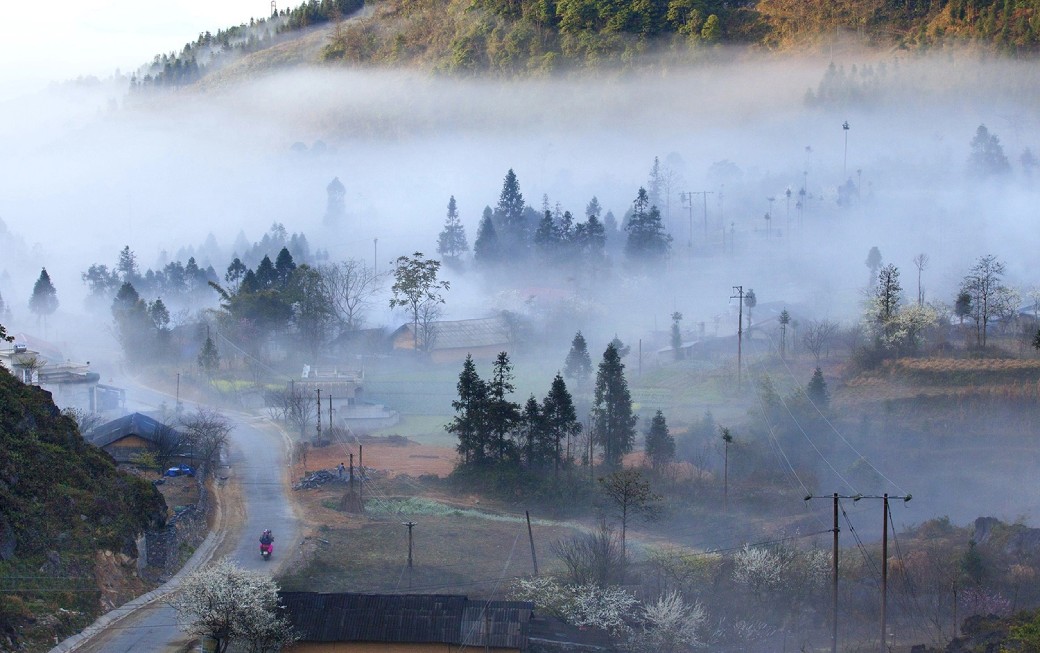
The way to Pho Cao in the early morning - Source: Vnexpress
MOTORBIKE FOR RENT IN HA GIANG - BOOK YOUR BIKE NOW!
3. What makes Pho Cao irresistible to travellers?
3.1. Unique Trinh Tuong architecture
The most striking feature greeting visitors to Pho Cao is the distinctive yellow earth houses known locally as "Trinh Tuong" architecture. These remarkable structures represent centuries of traditional building techniques perfectly adapted to the highland climate and local materials.
Constructed from compressed earth mixed with straw and other natural binding agents, these houses display a characteristic golden-yellow colour that creates a warm, welcoming atmosphere throughout the valley. The walls, built using traditional rammed earth techniques, provide excellent insulation against the mountain's temperature fluctuations while remaining environmentally sustainable.
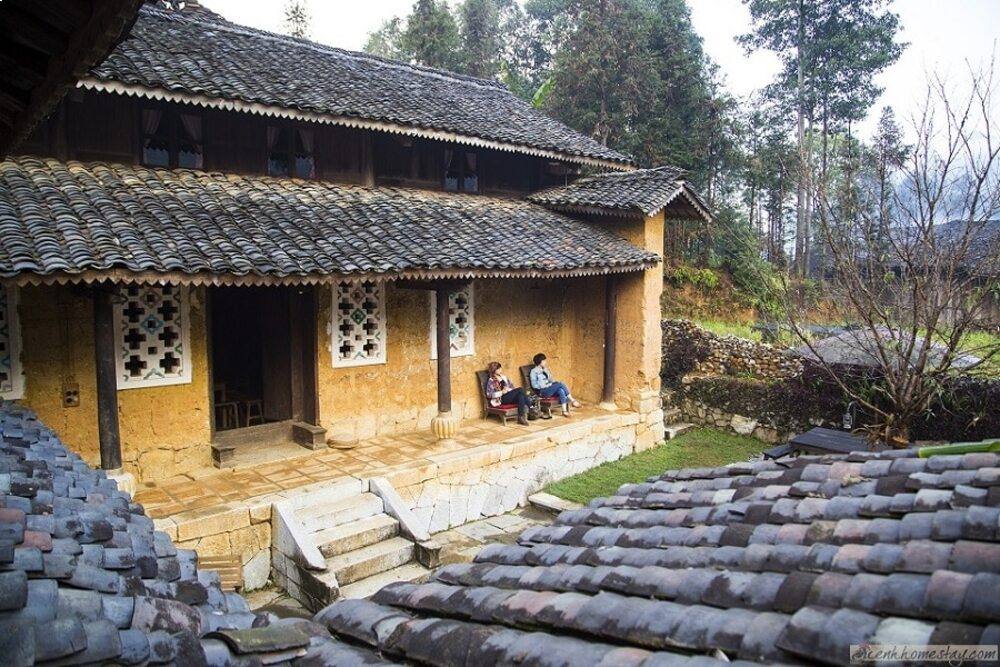
Trinh Tuong architecture - Source: Mia
The roofs feature traditional curved tiles arranged in the classic yin-yang pattern, creating distinctive silhouettes against the mountain backdrop. This roofing style not only adds aesthetic appeal but also provides superior water drainage during the region's intense rainy seasons.
Walking through Pho Cao feels like entering a living museum where traditional architecture continues to serve practical purposes. These houses, some over a century old, demonstrate remarkable durability and continue to shelter families generation after generation. The buildings blend seamlessly with the natural landscape, their earth-toned walls harmonising with the surrounding mountains and valleys.
Between these golden houses, visitors discover charming rose gardens and triangular buckwheat fields that bloom spectacularly during harvest season. This combination of traditional architecture and agricultural beauty creates the quintessential highland village atmosphere that makes Pho Cao so photogenic and memorable.
3.2. Pho Cao weekly market
While not as internationally famous as Dong Van or Bac Ha markets, Pho Cao's weekly market offers something increasingly rare: authenticity. This local gathering remains primarily attended by ethnic minority communities from surrounding villages, with tourists being a delightful rarity rather than the main attraction.
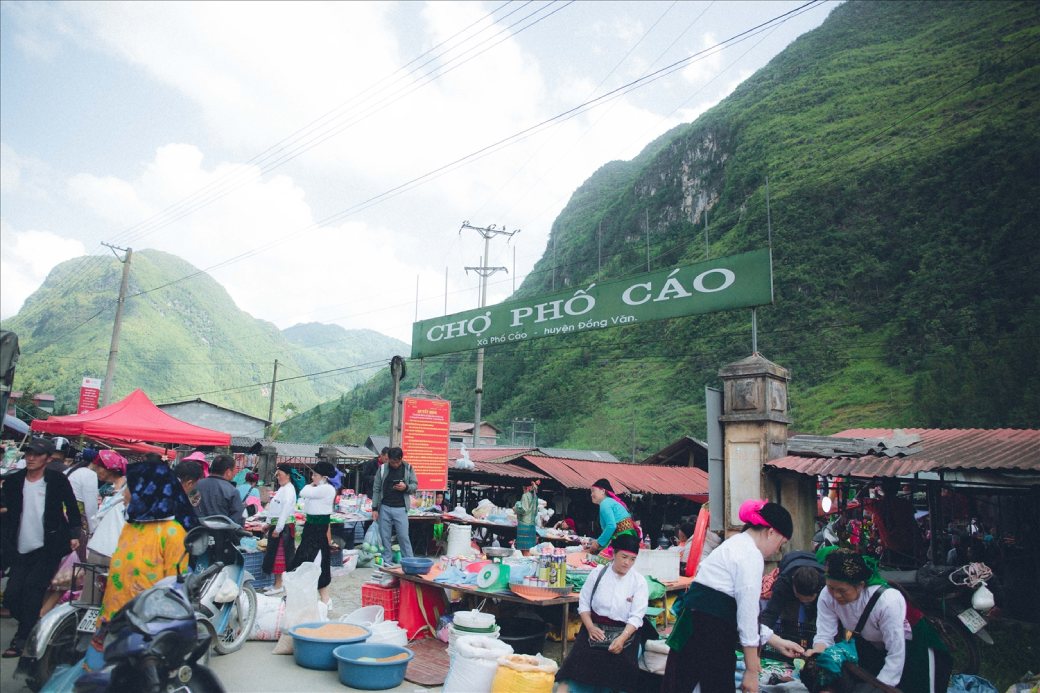
Source: Baodantoc
The market operates on a unique schedule that differs from typical Vietnamese markets. Rather than following standard weekly patterns, Pho Cao market convenes every six days, specifically on Ty and Ngo days according to the traditional lunar calendar. This unusual timing allows local farmers and artisans to balance market attendance with their agricultural responsibilities.
Market days begin before dawn, with vendors arriving by foot, motorbike, and occasionally on horseback, carrying goods from remote mountain villages. The atmosphere buzzes with seventeen different ethnic languages as various minority groups gather to trade, socialise, and catch up on community news.
The market extends far beyond simple commerce, serving as the social and cultural hub for the entire region. Families use market days to arrange marriages, conduct business deals, share news, and maintain the social connections that bind these remote communities together.
Visitors can sample authentic highland cuisine, purchase handmade textiles, taste local spirits, and observe traditional trading practices that have remained unchanged for generations. The market typically runs from early morning until mid-afternoon, offering the most vibrant atmosphere during the peak hours around 9-11 AM.
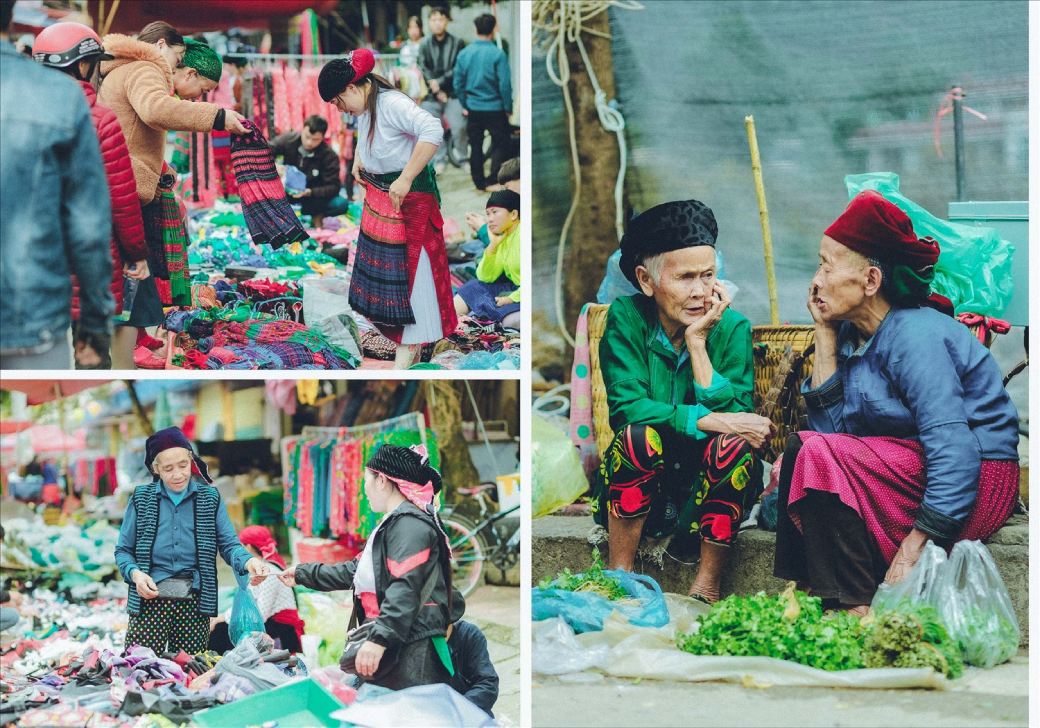
Source: Baodantoc
Interested in the local markets in Ha Giang? You can also visit Khau Vai Love Market
3.3. Buckwheat and Mustard flower fields
Pho Cao's landscape transforms dramatically with the changing seasons, but nothing compares to the spectacular flower blooms that paint the valley in brilliant colours. The region is particularly famous for its triangular buckwheat flowers and vibrant mustard blooms that create a natural carpet across the mountainsides.
Buckwheat flowers typically bloom from October through December, covering the terraced hillsides in delicate white and pink blossoms. These flowers aren't merely decorative – they represent an important food crop for local communities who harvest the seeds for flour and traditional dishes.
The triangular fields, carved into the mountainside following natural contours, create a distinctive geometric pattern that photographers find irresistible. Early morning light filtering through the mountain mist creates ethereal scenes that capture the essence of highland Vietnam.
Mustard flowers bloom slightly earlier, usually from September through November, adding brilliant yellow accents to the landscape. These flowers serve both agricultural and aesthetic purposes, as locals harvest mustard seeds for cooking oil and traditional medicines.
The combination of blooming seasons means visitors during peak flower season (October-November) can witness both varieties simultaneously, creating one of Vietnam's most spectacular natural displays. The flowers attract not only tourists but also countless butterflies and bees, adding movement and life to the already vibrant scenes.
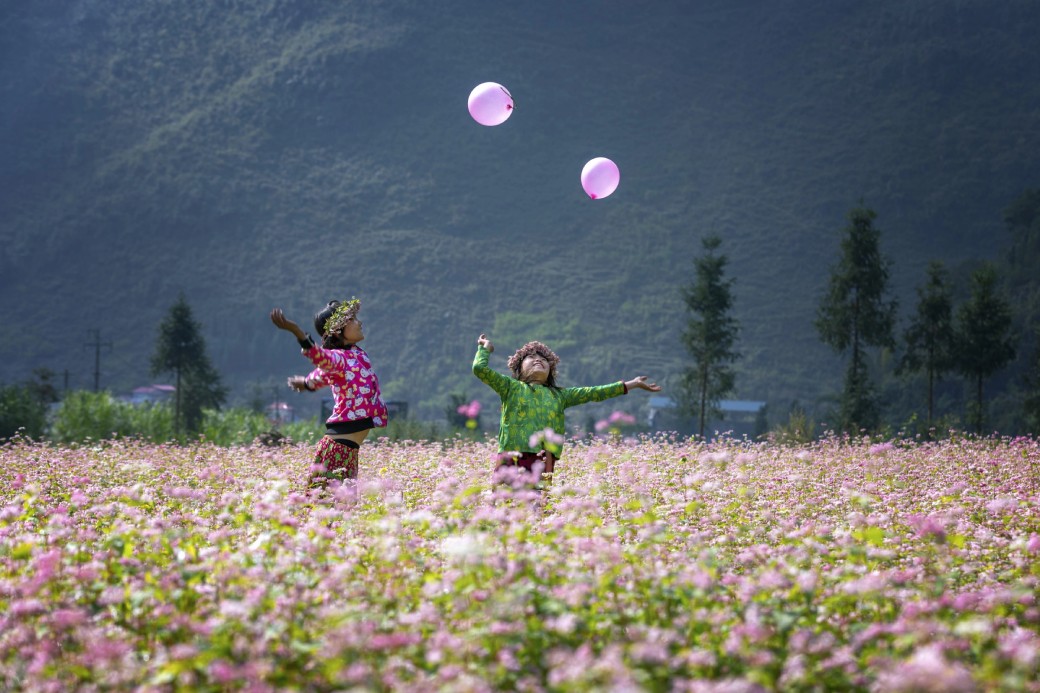
Source: Vnexpress
Read more: Weather in Ha Giang!
3.4. Distinctive cuisine
Pho Cao's cuisine reflects the ingenuity of mountain communities who have created delicious dishes from locally available ingredients. The food culture here emphasises fresh, seasonal ingredients prepared using traditional methods passed down through generations.
Thang Co is considered as one of top famous food in Ha Giang. It is a hearty soup made from horse meat and organs, seasoned with traditional highland spices and herbs. While adventurous for some visitors, this protein-rich dish provides essential nutrition for hardworking mountain communities.
Men Men represents another local speciality, featuring corn flour rolled into small balls and cooked with various meats and vegetables. This filling dish showcases how highland communities maximise nutrition from simple ingredients.
Five-Colour Sticky Rice displays the artistic side of local cuisine, with each colour derived from natural plants and herbs. Beyond its visual appeal, each colour traditionally carries cultural significance related to local spiritual beliefs.
Sour Pho offers a unique twist on Vietnam's national dish, featuring a tangy broth that cuts through the rich flavours of highland ingredients. This variation demonstrates how local communities adapt national dishes to suit regional tastes and available ingredients.
For the most authentic dining experience, visitors should eat at the weekly market, where local women prepare traditional dishes using time-honoured recipes. The market food stalls offer the freshest ingredients and most genuine flavours, plus the opportunity to interact with local cooks who are often happy to explain their techniques.
4. Essential travel tips for Pho Cao Ha Giang
4.1. Best time to visit
The optimal period for visiting Pho Cao extends from October through December, when multiple factors align to create ideal conditions. During these months, the weather remains pleasantly cool with minimal rainfall, making mountain travel safer and more comfortable.
This timing coincides with the spectacular flower blooming seasons, when both buckwheat and mustard flowers paint the landscape in brilliant colours. The harvest season also means local markets feature the freshest produce and the most diverse selection of traditional foods.
Weather conditions during peak season typically feature daytime temperatures around 20-25°C (68-77°F) with cooler evenings dropping to 10-15°C (50-59°F). The dry conditions mean clearer mountain views and better road conditions for motorcycle travel.
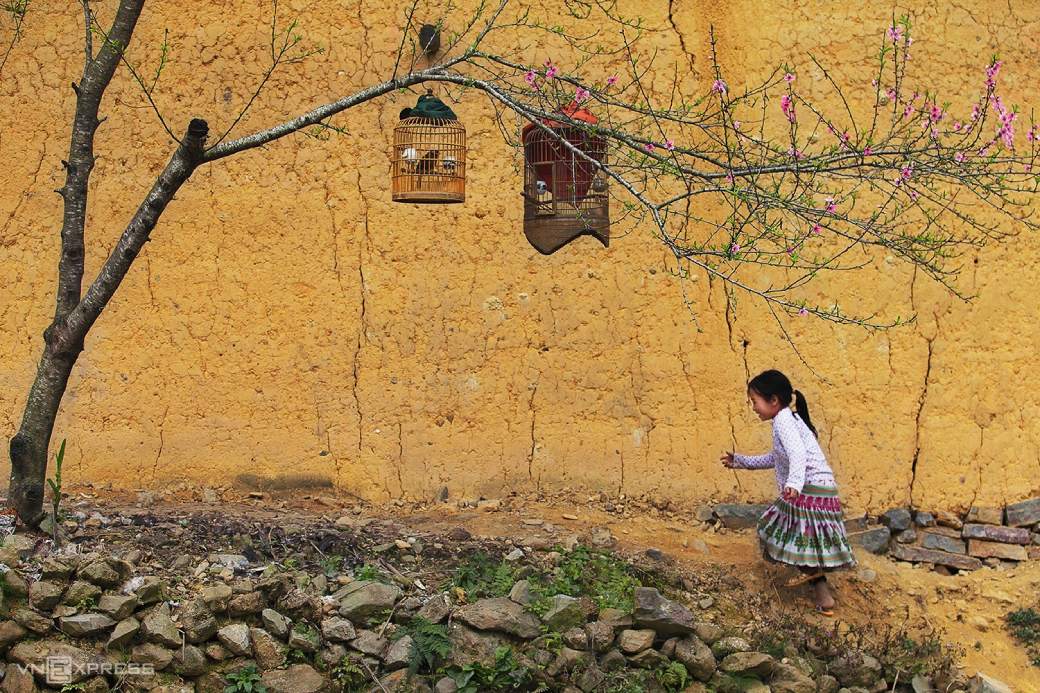
Source: Vnexpress
4.2. Transportation options
Most independent travellers prefer renting motorcycles for the flexibility and authentic mountain riding experience. However, mountain driving requires experience and confidence, as roads feature steep grades, sharp curves, and occasional challenging conditions.
For those uncomfortable with motorcycle travel, local buses connect Ha Giang city with Dong Van, from where local transportation can be arranged to reach Pho Cao. Private car rentals with drivers offer comfort and safety but limit the spontaneous exploration that makes mountain travel so rewarding.
Regardless of transportation choice, travellers should plan for longer journey times than GPS estimates suggest, as mountain roads require careful navigation and frequent stops for photos and rest.
4.3. Packing essentials
Ha Giang weather can change rapidly, making layered clothing essential. Pack warm jackets for cool mornings and evenings, even during warmer months. Temperatures can drop significantly after sunset, particularly during the dry season.
Sturdy, comfortable walking shoes are crucial for exploring the village and market areas, which feature uneven terrain and occasional mud during rainy periods. Waterproof footwear offers added protection during unpredictable weather conditions.
Other essentials include sun protection (hat, sunscreen, sunglasses), personal medications, and cash in small denominations, as ATM access is limited and most local transactions require cash payment.
5. Other attractions that you should not miss
1 - Dong Van Old Quarter
The historic Dong Van Old Quarter showcases well-preserved French colonial architecture mixed with traditional Chinese and Vietnamese buildings. This UNESCO-recognised area offers excellent restaurants, comfortable accommodations, and easy access to regional attractions.
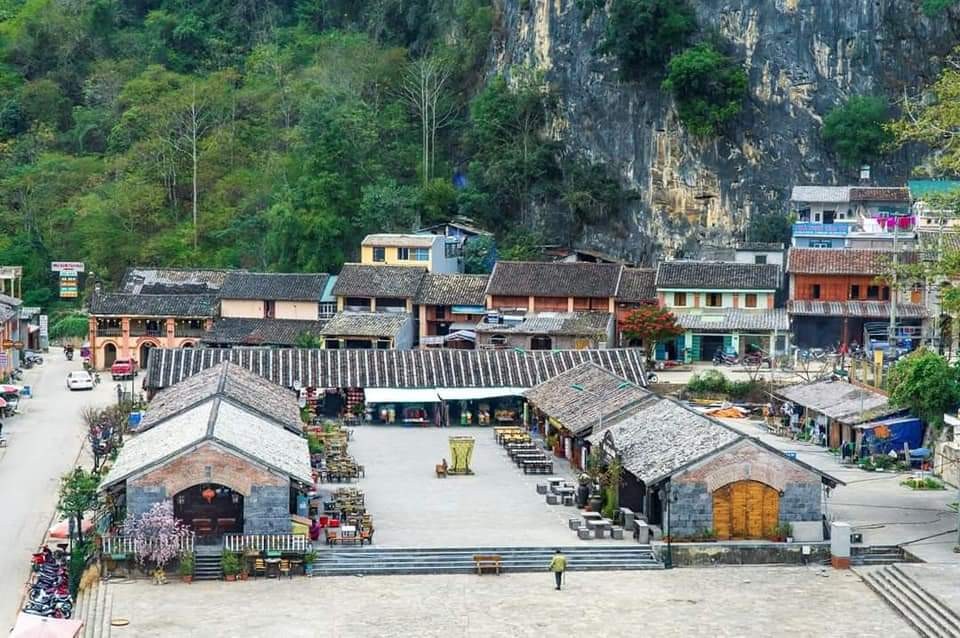
Source: Tuyên giáo Hà Giang
2 - Lo Lo Chai Village
Home to the Lo Lo ethnic minority, this traditional village provides insight into one of Vietnam's smallest ethnic groups. The distinctive black clothing and unique cultural practices make Lo Lo Chai a fascinating cultural destination.
3 - Vuong Palace
This impressive 19th-century fortress-like residence demonstrates the wealth and power of influential highland families. The architecture combines Chinese, French, and local influences in a structure that dominates the surrounding landscape.
4 - Tham Ma Pass
Known as one of Vietnam's most dangerous roads, Tham Ma Pass challenges even experienced mountain drivers with its steep grades and sharp curves. The route offers spectacular views for those brave enough to navigate its challenges.
5 - Ma Pi Leng Pass
Often referred to as Vietnam's most beautiful mountain pass, Ma Pi Leng offers breathtaking views of the Nho Que River valley far below. The dramatic landscape and engineering marvel of the road itself make this a must-visit destination.
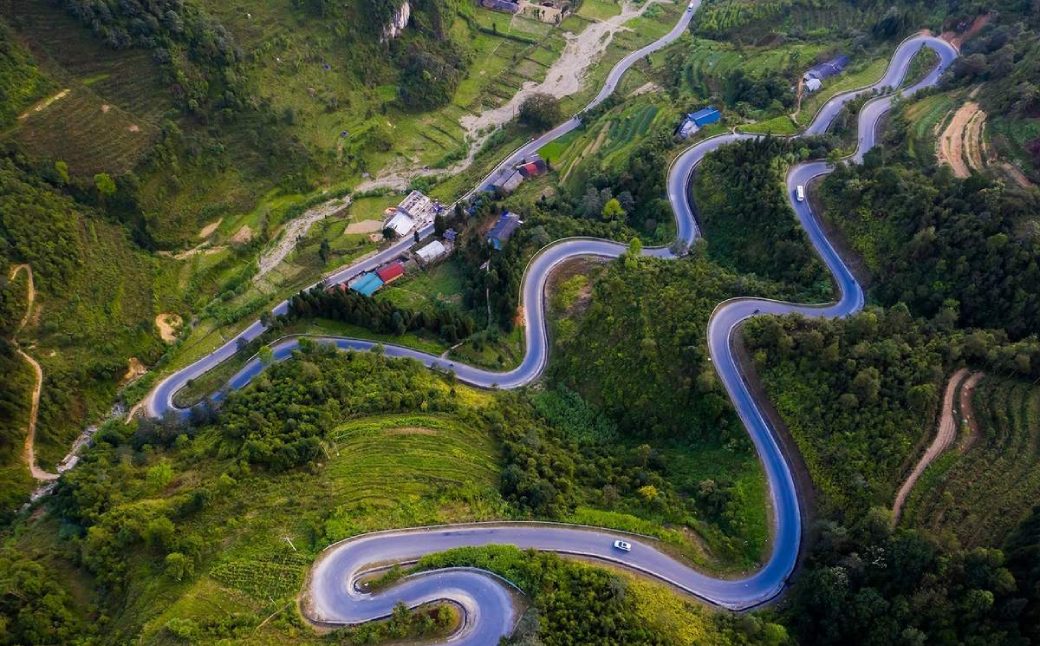
Source: Tien Nguyen
Make your Ha Giang adventure unforgettable with HaGiangGoPlanning an authentic Pho Cao experience requires local expertise and reliable services that understand the unique challenges of highland travel. HagiangGo specialises in providing comprehensive travel solutions for visitors seeking genuine mountain adventures in Ha Giang province. Our motorcycle rental service features well-maintained bikes suitable for mountain terrain, complete with safety equipment and detailed route guidance. We understand the importance of reliable transportation when exploring remote destinations like Pho Cao, and our local knowledge ensures you'll discover hidden gems that typical tourists miss. Beyond transportation, HagiangGo offers carefully curated accommodation options that range from authentic homestays in traditional houses to comfortable hotels in nearby towns. Our local partnerships ensure you'll experience genuine highland hospitality while maintaining the comfort level you prefer. Our tour packages can be customised to match your interests and experience level, whether you're a photography enthusiast seeking the perfect flower field shots, a culture lover wanting deep interaction with ethnic communities, or an adventurer ready to tackle challenging mountain trails. With HagiangGo as your local partner, you'll gain access to insights and experiences that transform a simple visit into a profound connection with one of Vietnam's most beautiful and authentic highland regions. Let us help you discover why Pho Cao remains one of Ha Giang's best-kept secrets, and why those who visit always leave planning their return.
|
